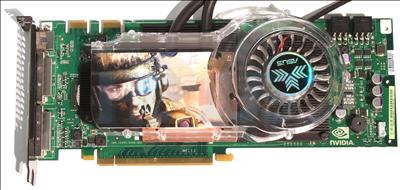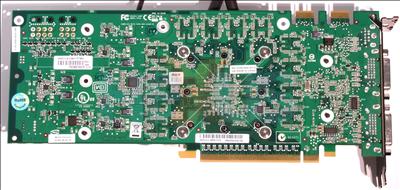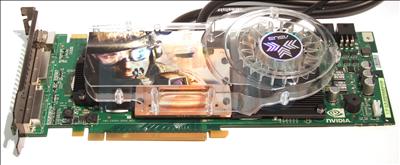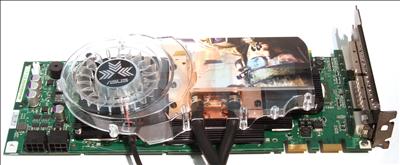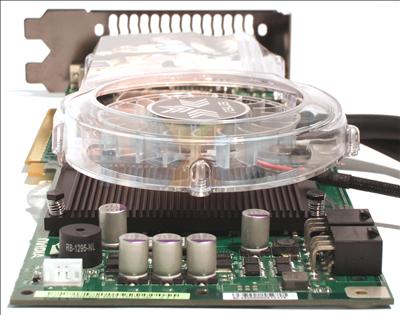Appearance and thoughts I
GeForce 8800 GTX is a big, hot beastie of a GPU that usually requires a well-designed, double-height heatsink to keep a default-clocked (575MHz core) SKU cool.
In a bid to outperform other competing solutions, ASUS introduces the double whammy of air- and water-cooling on the same card.
The cooling is all contained upon the top-side, though.
An angled look shows the waterblock in the mid section, with a plastic appendage, housing the card-based fan, to the right.
Here we see it from the opposite side. The process can be defined as one of watercooling the GPU, together with a large heatsink covering the GDDR3 memory and other ASICs. These, however, benefit from fan-assisted cooling.
The combination of cooling allows ASUS to guarantee operation at 630MHz core, 1458MHz shader, and 2060MHz memory. That's up from the 575/1350/1800 on default GTX cards, and represents a 9.6/8/11.4 per cent increase for these performance-defining parameters.
The clocks are undeniably impressive, but this may not be the fastest graphics card around. That honour, it seems, falls to the BFG Extreme OC Water model, running at 650/1500/2000.
The front-on shot highlights the two 6-pin PCIe power connectors that are present on all GTX models. Common sense dictates that you invest in a high-quality PSU if you're planning on upgrading to a GeForce 8800 GTX. The AquaTank consumes around 200W, by itself, when under full 3D load.






